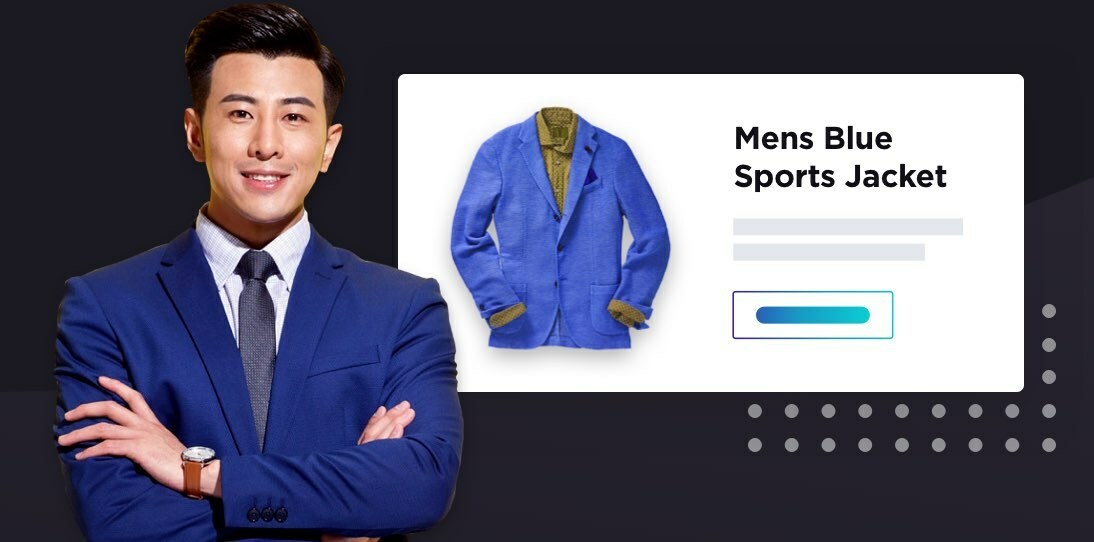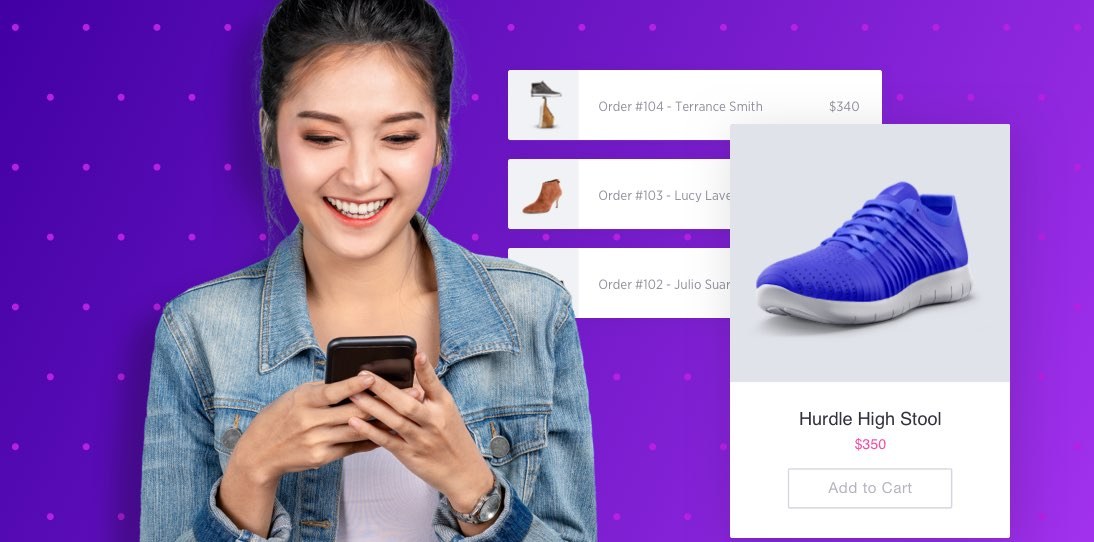- Enterprise
- Essentials
7 Trends for DTC Brands Looking to Stand Out in a Crowded Field

Increase Your Ecommerce Sales from $1 million to $100 Million
7 Trends for DTC Brands Looking to Stand Out in a Crowded Field
The past decade in retail saw a monumental shift — one in which the shopping experience was more tailored to what is convenient and easy for the consumer, rather than the retailer.
This process of delivering a product directly to a consumer is relatively new to retail, with brands like Bonobos and Glossier making the first pivot into the distribution model in the mid-2010s.
Coined “direct-to-consumer” or DTC, this movement started first with easy-to-ship items like skincare, makeup and fashion. Now, higher-priced and more complex items like smart home technology are also seeing success in the DTC space.
A direct-to-consumer model can look a little different depending on the brand, the consumers, and the area of the market they work with.
- Some incorporate marketplaces — like eBay and Amazon — into their channel mix.
- Some open up permanent or pop-up shops in brick-and-mortar locations.
- Some rely on brand partnerships to capture mutual audiences with like-minded retailers.
But if the decade saw a monumental shift, the last year and a half was an earthquake of shifting and adjusting. COVID-19 accelerated ecommerce adoption far more quickly than anyone expected, and much of that adoption is likely here to stay.
Get expert insights on the go with our biweekly audio series where global thought leaders discuss all things ecommerce — from industry news and trends to growth strategies and success stories.
Current DTC Landscape
The overall landscape of online sales continues to grow.
COVID-19 lit a fire under ecommerce sales, and at the time of one survey in October 2020, it was estimated that U.S. ecommerce sales would reach a full 14.4% in 2020 — making their estimate for 2021 a full percentage point higher than originally anticipated.
Source: Statista
Prior to Covid, it was the growing opportunity for traditional brick-and-mortar retailers to move online. Over the last year, there’s been even more businesses moving online — and this time, it was out of necessity.
With more people at home, avoiding crowded shopping areas, they turned to the web to buy as much of their goods online as possible. When their typical “go-to” retailers didn’t have what they needed because of fractured supply chains and other challenges, they got creative.
And the ideas of what one can and should buy online are changing as fast as the category is growing. (Example: houseplants!)
Top 7 DTC Trends
While competition continues to heat up and the space matures, there’s still plenty of opportunity for the new and different. But it is important for any DTC business to find ways to gain exposure and differentiate themselves from both direct and indirect competitors. Here are some of the trending ways we’ve seen DTCs grow their market share.
1. DTC brands lean on collaboration.
One of the biggest challenges of starting any new business is getting the word out. In the brick-and-mortar world, you hope for a great spot on Main Street so people will see you. Online, you pay for advertising and hope your message resonates.
But there are some other things that DTC brands can do to make sure they end up on the right people’s radar. Collaborating with other DTC brands — those with complementary, but not competitive products — is a great way to mutually boost your exposure.
A great example is the collaboration between fire pit and grill manufacturer Solo Stove and outdoor furniture company Outer.
Source:Solo Stove
2. Personalized marketing will be on everyone’s radar.
Look at any direct-to-consumer brand, and you’re sure to find thoughtful ways of how they personalize the shopping experience for their customers.
In a personalized shopping experience, an ecommerce brand uses your previous shopping, search and browsing history to tailor the way you navigate through their website. This could be as simple as prompting you to log into your account so that your order history, payment and shipping details are pre-populated. Some companies go even farther than that. In a recent article for MarketerHire, DTC branding expert Nik Sharma describes one company’s efforts in making a smart landing page that could adjust content based on the user’s physical location.
3. DTC brands will experience an image overhaul.
For a while, DTCs all seemed to be speaking to the same person. Lots of pastels. Soft lines. Or, at least, that’s what it looked like. Ben Schott’s September 2020 piece for Bloomberg detailed his perspective on the “bland new world” of DTC branding.
DTCers have woken up from that pastel dream and are starting to take more chances in the branding arena. Expect coming DTCs to step outside that pre-defined aesthetic and create something true to them and their shoppers.
4. DTCs will go global.
DTC brands are really starting to see the benefits of selling outside the U.S., and ecommerce platforms are making it easier than ever. Jiake Liu, CEO and co-founder of Outer, said, “A lot of companies that have been really just focused on the domestic market, I think they will start looking at international markets.”
5. More traditional retailers test DTC.
In an effort to grab more market share and appeal to different types of customers, older and traditional retailers are either acquiring DTC brands or creating in-house brands that mirror the branding and strategy of DTC brands.
Let’s look at Gillette and Ivory — two classic CPGs we see in most every grocery and big box store. Gillette now has an online storefront for Gillette On Demand, its answer to razor companies like Harry’s and Dollar Shave Club. And Ivory, too, now offers their products online.
Another way companies test out the DTC strategy is by acquiring an already-tested brand in the market. Unilever started this with their 2016 acquisition of Dollar Shave Club; more recently, Procter & Gamble purchased Billie, Native and Walker & Company.
6. Some DTC brands test out new product categories.
Product diversification is one of the most common ways in which DTC brands are achieving greater success after launch.
Diversification mitigates risk in the event of an industry downturn and allows for an extra barrier against competition.
There are two diversification techniques often used by DTC brands:
- The brand expands personalization, color and sizing options of existing products.
- The brand expands into completely different, yet often complementary, products.
A perfect example of product diversification is the brand Burrow — who started with modular couches but now sells additional home items like wall shelving, rugs, coffee tables and throw pillows.
7. DTCs put focus on subscription-based products.
We’ll be honest: this is less of a “trend” and more of a tried-and-truecustomer retention method.
A more recent survey, conducted in late 2019, asked ecommerce companies how many of them planned to offer product subscription services in 2020:
- 23% said they planned to offer product subscriptions
- 10% already offer a subscription
- 10% said they didn’t know
- 1% were still considering
Only 56% of brands were sure they would not offer a subscription in 2020.
Brands Using the DTC Model
Chances are you’ve heard of one of the marquee direct-to-consumer brands (think Allbirds, Glossier, Warby Parker, etc.), but almost on a daily basis, new and disrupting DTC brands are launching. These are some of our tried and tested favorites.
1. Burrow
Built off of the idea that furniture should be practical, usable and easy-to-build, Burrow brings a fresh look to the furniture industry.
With the tagline “the luxury couch for real life”, Burrow sells couches and other home decor for people who want quality furniture with the associated high-ticket price. Read more about the Burrow and BigCommerce story here.
Wrapping Up
Even as the market becomes more competitive, there’s still a lot of opportunity for DTC businesses into the next few years — as long as you can find your unique brand voice and communicate that to your target audience. Now that you’ve got a list of DTC trends to watch, think about how you can incorporate them into your own business, whether it’s taking your sales global, trying out a new subscription model or learning harder on personalized marketing.
DTC Trends FAQs
1. What is DTC retail?
DTC refers to the process of delivering a product directly to a consumer instead of using wholesalers as middlemen or aiming to sell products only in retail stores.
2. What is a DTC brand?
A DTC brand is one that controls all portions of the selling experience, from manufacturing the product to marketing and selling it online directly to their target end users. A few great examples are Warby Parker, Burrow, Glossier and Hyphen Sleep.
3. How fast is DTC growing?
COVID-19 lit a fire under ecommerce sales, and at the time of their survey, they estimated that U.S. ecommerce sales would reach a full 14.5% in 2020 — making their estimate for 2021 a full percentage point higher than originally anticipated.
4. How did COVID-19 impact DTC’s growth potential?
It’s hard to say exactly, but it’s likely that the impact of COVID-19 was positive for DTC brands. The pandemic forced more shoppers to make purchases online. While online, many shoppers took the extra time they had to search for new alternatives to old products, leaving brand loyalty in question much of the year. The pandemic also changed people’s habits, activities and routines, so that created opportunity for any business that could pivot quickly to meet the times.
5. How many DTC brands are there?
A January 2019 report from eMarketer estimates there are approximately 400 DTC brands. After a year of COVID, that number is likely to be higher.
6. Is it difficult to sell globally with a DTC business?
A lot goes into selling across borders, but it’s a great way to scale your business if you have the back-end infrastructure to support it. Check with your ecommerce platform to see what kind of support you can expect. Then, consider if you’ll need multi-site functionality and if anything special will be needed to ship your products internationally.
7. What’s the benefit of an already-successful brick-and-mortar or traditional business taking a DTC approach?
Many CPG brands have tried out the DTC approach so they could build a closer relationship with their customers. DTC gives them access to more first-person data about their customers and makes them better able to deliver the experience customers want.


